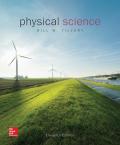
Concept explainers
A sandstone building stone measuring 50.0 cm long by 20.5 cm wide by 15 cm thick is 70 percent quartz with the rest of its volume being empty pore space. Based on the specific gravity of quartz determined in exercise 3, what is the mass of this building stone in kg? What would be its mass if it were quartzite? (Recrystallization of metamorphism eliminates the pore space.)
The mass of building stone in kg and mass of the Quartzite, if sandstone building measuring is
Answer to Problem 14PEB
Solution:
Explanation of Solution
Given data:
Length of the sandstone building is
Width of the sandstone building is
Height of the sandstone building is
Quartz of the sandstone building percent is
Formula used:
Write the formula for density
Here,
Write the formula for volume and multiply by the percentage that is quartz:
Here,
Explanation:
For sandstone:
Convert length m to cm.
Convert width m to cm.
Recall the formula for density
Rearrange:
Recall the formula for volume and multiply by the percentage, i.e., quartz:
Substitute
Substitute
Convert mass g to kg.
For Quartzite:
Substitute
Convert mass g to kg.
Conclusion:
The mass of building stone in kg is
Want to see more full solutions like this?
Chapter 17 Solutions
Physical Science
Additional Science Textbook Solutions
Loose Leaf For Explorations: Introduction To Astronomy
The Cosmic Perspective
College Physics
Conceptual Integrated Science
University Physics with Modern Physics (14th Edition)
Essential University Physics: Volume 2 (3rd Edition)
- What is the density of a rock of mass 1kg and a volume of 5 cubic centimeters?. show units used.arrow_forwardYou are given five transparent objects: a calcite crystal, a diamond, a piece of window glass, a sample of quartz, and a piece of zircon. How would you go about identifying each sample? How would they rank on the Mohs hardness scale?arrow_forwardHow are igneous rocks formed?arrow_forward
 An Introduction to Physical SciencePhysicsISBN:9781305079137Author:James Shipman, Jerry D. Wilson, Charles A. Higgins, Omar TorresPublisher:Cengage Learning
An Introduction to Physical SciencePhysicsISBN:9781305079137Author:James Shipman, Jerry D. Wilson, Charles A. Higgins, Omar TorresPublisher:Cengage Learning
